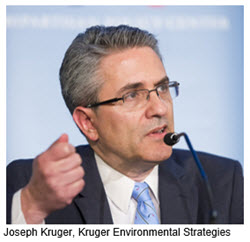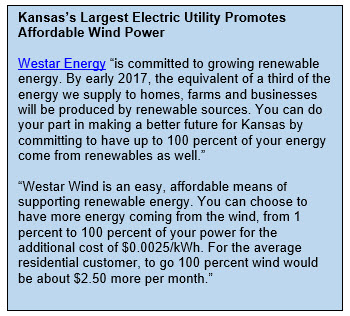(Editor’s note: This is the second in a two-part series on net metering. For more about net metering, read Net metering battles test renewable energy support in the Aug. 24 Energy-Pulse.)
The immediate threat to utilities is that net metering rules in 41 states mandate that utilities buy rooftop solar owners’ excess power even when the utilities can generate or buy cheaper power. So utilities, their state regulators, and renewable energy advocates all are looking for ways to resolve this clash between traditional power companies and the growth of renewable energy.
The utilities’ opportunity-limiting dependency on increasing electricity use must change, says Joseph Kruger, principal at Kruger Environmental Strategies and a former EPA Clean Air Markets branch chief. He explains that under current rules, to the extent that energy efficiency, storage, demand response, and distributed generation sources like rooftop solar decrease the need for new investment in power plants and electricity infrastructure, utility company profits shrink and the utilities will continue to resist change.
But Kruger tells Agri-Pulse that today’s market forces and expectations about future carbon regulation make change inevitable, despite resistance from some utility companies and states. As an example of the changes already taking place, he points to Georgia Power’s 203-page 2016 Integrated Resource Plan which includes “a range of scenarios with different carbon prices as part of their planning.”
“I think most power companies have already acknowledged the inevitability of carbon regulation,” he says.
Georgia Power, serving 2.4 million retail customers, is part of the 27-state lawsuit seeking to overturn the administration’s Clean Power Plan (CPP) to limit power plant carbon emissions. Following the Supreme Court’s February decision to suspend CPP implementation, the litigation’s next step is set for Sept. 27 when the U.S. Court of Appeals for the District of Columbia will hear opposing arguments in the case.
Georgia Power’s 2016 resource plan says that its mix of nuclear, natural gas, coal, oil, hydro, solar, wind and biomass generation “positions the company to maximize value for customers in a wide variety of future economic and regulatory scenarios” and that “maintaining a diverse supply-side generating portfolio is critical given the inherent uncertainty of the future and the potential for rapid changes in the economic and regulatory landscape impacting energy supply.”
The utility’s plan also explains that even while challenging the EPA’s Clean Power Plan in court, the company will continue “to position its system for a carbon constrained future.” It predicts that its plans to add another 525 megawatts to its existing 2,500 MW of renewable energy, including distributed solar resources, “will benefit customers and will also help position the company to respond to rules or legislation constraining carbon emissions.”
 Kruger notes that nobody knows how the Supreme Court will
eventually rule on the CPP. So he says most states and power companies are
pursuing a prudent two-track strategy, joining the lawsuit while “more quietly
at the technical level, they are continuing to do some of the technical work
towards implementation.” He believes that “there is a good chance that EPA will
win either completely or in part,” that “in some form or another, the Clean
Power Plan will survive,” and that “most power companies have already
acknowledged the inevitability of carbon regulation.”
Kruger notes that nobody knows how the Supreme Court will
eventually rule on the CPP. So he says most states and power companies are
pursuing a prudent two-track strategy, joining the lawsuit while “more quietly
at the technical level, they are continuing to do some of the technical work
towards implementation.” He believes that “there is a good chance that EPA will
win either completely or in part,” that “in some form or another, the Clean
Power Plan will survive,” and that “most power companies have already
acknowledged the inevitability of carbon regulation.”
Despite today’s heated battles over the CPP and net metering, Kruger says utilities increasingly see incorporating renewables as “in their interest and good business.” He adds that clean energy advocates “understand that when you get to the higher levels of penetration for these technologies like solar panels … you need more sophisticated tools to accurately reflect both costs and benefits.”
Kruger, a Resources for the Future visiting fellow, writes in a “Utility of the Future” article that implementing the Obama administration’s Clean Power Plan or some other form of carbon regulation is “inevitable.” But he says that to make this happen with the greatest benefits and least pain, new regulatory and market structures are needed “to align the financial incentives of utilities with evolving markets and technologies.”
Kruger maintains that new regulations and rates should reflect the fact that rooftop solar and other new distributed sources for electricity provide valuable benefits such as “avoided energy costs, avoided capacity costs for generation, reduced costs for ancillary services, lower line losses on the transmission and distribution system, and fewer investments needed in transmission and distribution facilities.”
He points out that “traditional cost-of-service regulation is no longer aligned with emerging utility market structures.” He says states such as New York, Minnesota, Colorado and California are responding by finding ways to offer utilities “new sources of revenue that don’t depend on selling more electricity.” The answer he favors is shifting to performance-based rates using “metrics such as peak reduction, energy efficiency, customer information access, affordability, and interconnection.”
This shift to performance incentives is already happening. New York state’s Public Service Commission is calling on utilities to “embrace, instead of resisting, the rapid innovation that is occurring.” Announcing major regulatory reforms in May, the PSC warned that the changes are needed because “the current utility and regulatory model could lead to uneconomic grid defection and eventually result in stranded investments and increasing financial challenges.”
New York’s 170 pages of new Energy Vision rules are designed to replace “the conventional cost-of-service ratemaking approach” with “outcome-based performance measures.” Under the new rules, instead of earning profits based on selling more electricity to their customers and building new power plants and transmission lines, utilities are incentivized to boost their earnings by helping consumers improve energy efficiency and install customer-owned distributed generation such as rooftop solar panels.
Along with Georgia Power, Westar Energy in Kansas has joined the lawsuit challenging the Clean Power Plan. But it’s also a leading renewable energy provider. Gina Penzig, Westar’s media relations manager, tells Agri-Pulse that “while we are fighting the Clean Power Plan, we at the same time are modernizing our generation fleet and think we need to add renewable sources to improve air quality in the state.”
Westar promotes renewable energy, Penzig says, but recognizes the need for new rates for customers generating their own power “to ensure that if they are using the power grid, that cost is being covered, that they are paying their fair share.” This means, she says, adding demand charges and/or new monthly fixed charges.
As for what Westar considers “potential benefits allegedly provided by” rooftop solar and other distributed generation sources, Penzig says Westar wants the Kansas Corporation Commission to continue to base rates “on quantifiable costs,” not on “externalities” like environmental benefits that may benefit society as a whole rather than just Westar’s electricity customers.
The National Rural Electric
Cooperative Association (NRECA) agrees on the need for change. Mary
Ann Ralls, NRECA senior director, regulatory counsel, tells Agri-Pulse that
while net metering began as a way to support “very small residential” solar power
generation, it has morphed into compensating rooftop solar owners “at retail
rates for wholesale power and under-collecting fixed costs for serving those
customers.” She says possible fixes include adding new monthly charges so that
solar owners pay their fair share of grid costs or following the lead of some
states like Ohio that compensate solar owners at wholesale rather than retail
rates.
Ralls adds that before investing in rooftop solar, homeowners should realize there are alternatives, such as optimally sited community solar, for supporting renewable energy without rooftop solar’s extra costs and controversies.
In its April 2016 Value of Distributed Solar Generation white paper, NRECA warns against continuing to require utilities to purchase rooftop solar or other distributed generation power “when the utility could otherwise have acquired power from an existing hydro resource, a utility-scale wind farm or REC (renewable energy credit) certificate with equivalent environmental attributes at a significantly lower price.”
#30
For more news, go to: www.Agri-Pulse.com
